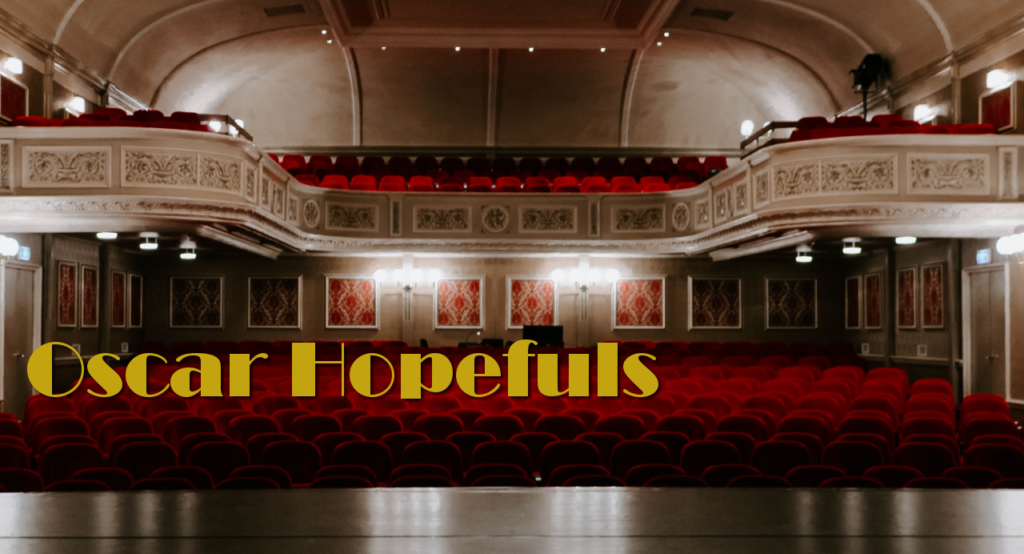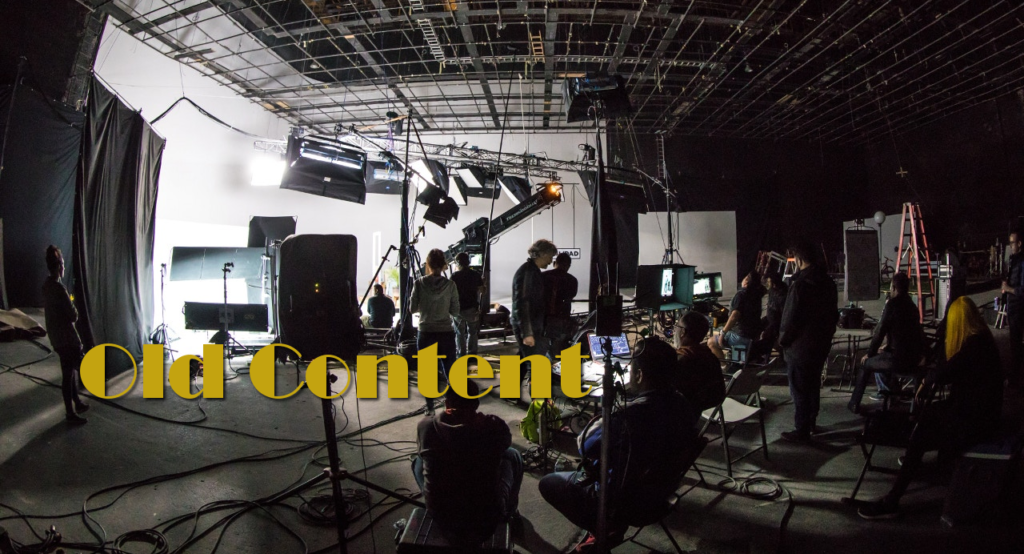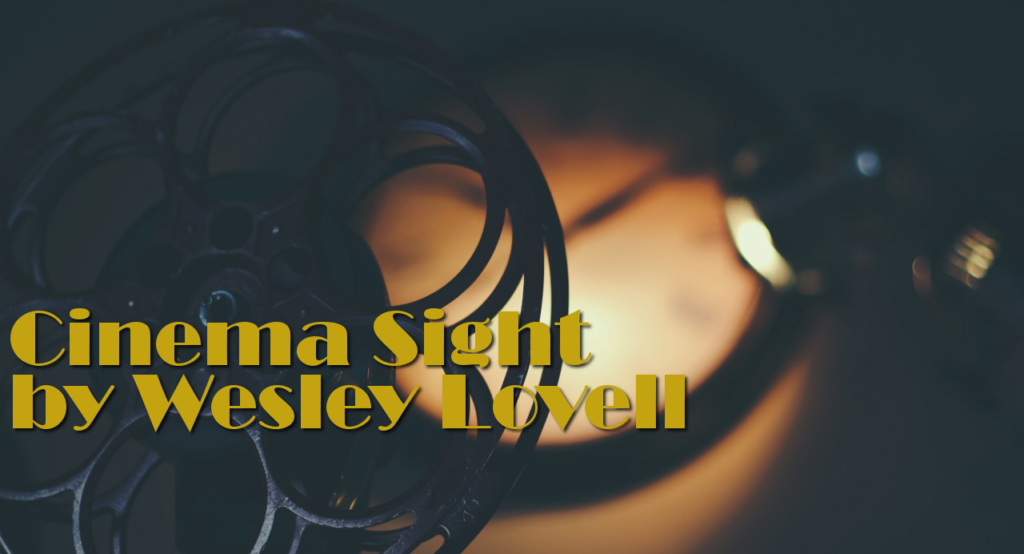 One of the most beloved films of all time, Joshua Logan’s Fanny, has finally been released on DVD. To commemorate the occasion, I’ll take a look at Fanny and other major films released in the U.S. in 1961 starting with the year’s top ten. It took two directors, Robert Wise and Jerome Robbins, to bring the Leonard Bernstein-Stephen Sondheim musical West Side Story to the screen. Filmed on the mean streets of New York’s upper west side just before the buildings were torn down to make way for Lincoln Center, the film is essentially a modern Romeo and Juliet tale set against the backdrop of interracial gang warfare. Natalie Wood is the innocent Puerto Rican girl and Richard Beymer the Anglo boy she falls in love with to the consternation of both sets of family and friends, but it’s second leads George Chakiris as Natalie’s gang leader brother and Rita Moreno as his street wise girlfriend who walked home with the acting honors as well as two of the film’s 11 Oscars in supporting categories. The film also won for Best Picture, Direction and numerous technical awards. Based on the 1948 Nuremberg trial of the judges who rubberstamped Hitler’s atrocities, Stanley Kramer’s Judgment at Nuremberg was expanded from a successful TV docudrama and given an all-star cast to add dramatic heft. Spencer Tracy, in one of his last great roles, is fairness personified as the American judge who oversees the trial, while Maximilian Schell brilliantly plays the defense counsel opposite Richard Widmark’s U.S. Army prosecutor. Marlene Dietrich is heartbreaking as the proud widow of an executed German officer as are Judy Garland and Montgomery Clift as victims of the atrocities. Only Burt Lancaster, in a role planned for Laurence Olivier, seems out of place as the most stoic of the judges on trial, though he does have one riveting scene near the end. Schell won an Oscar as did Abby Mann for adapting his own teleplay for the screen. Tracy, Garland, Clift, Kramer, cinematographer Ernest Laszlo and the film itself were among the film’s 11 nominations. A worldwide sensation, Federico Fellini’s La Dolce Vita opened the floodgates to foreign film releases in the U.S. like nothing before or since. Marcello Mastroianni stars as a disillusioned paparazzo through whose eyes we see the world pass by. Less ambiguous than most Fellini works, the title translates ironically as “the sweet life” when what it’s really about is “the empty life”. Among its fascinating juxtapositions are the suffocation of monogamy vs. the meaninglessness of promiscuity and sincere religious beliefs vs. manipulative hypocrisy. Above all it is a visually stunning masterwork with unforgettable images from the statue of Christ flying over Rome to Anita Ekberg bathing in the Fountain of Trevi. The film won an Oscar for Black-and-White Costume Design and was nominated for its art direction, screenplay and Fellini’s direction. Perhaps no romantic comedy in film history has grown in stature over the years like Blake Edwards’ Breakfast at Tiffany’s. It was taken from Truman Capote’s novella about the romance between a call girl and a gigolo forever immortalized by Audrey Hepburn and George Peppard to the strains of Henry Mancini’s magnificent score which includes Audrey’s plaintive singing of the great Oscar-winning “Moon River”. Exquisitely filmed on location in New York, Hepburn always maintained that she was badly cast in a role Capote envisioned for Marilyn Monroe, but legions of fans beg to differ for her Holly Golightly is easily the best loved of all of Audrey’s performances. The only sour note is the embarrassing performance of Mickey Rooney as Holly’s Japanese neighbor. The film was nominated for five Oscars including Best Actress and won two for Mancini’s score and for the song “Moon River”. Edwards’ direction was not nominated for an Oscar, but he was singled out as one of the finalists for a DGA (Directors’ Guild of America) award. Marcel Pagnol’s Marseilles trilogy of the 1930s (Marius, Fanny and Cesar) became the Broadway musical Fanny in 1954, which was filmed with its glorious score mostly intact, but without the lyrics being sung in what was originally advertised as Joshua Logan’s Fanny (until someone pointed out the double meaning). Whether it’s writer Pagnol, composer Harold Rome or director Logan whose name precedes the title, the 1961 version owes as much to master cinematographer Jack Cardiff as it does those gifted artists as it is one of the most visually splendid works of art ever committed to film. It is also one of the best acted with Leslie Caron and Horst Buchholz as Fanny and Marius, the young lovers separated by his love for the sea; and especially by those two old rascals Charles Boyer, as Marius’ father Cesar, and Maurice Chevalier, as Fanny’s benefactor Panisse. The film was nominated for five Oscars including Best Picture, Direction and Actor (Boyer), and four Golden Globes including Best Picture, Actor (Chevalier) and Actress (Caron). Paul Newman had one of the most acclaimed roles of his career as “Fast Eddie” Felson in Robert Rossen’s The Hustler, a role he repeated to an Oscar win 25 years later in Martin Scorsese’s The Color of Money. Filmed in stark black and white against the backdrop of seedy, smoke-filled pool halls, the film is one of the bleakest, grimmest dramas ever to be nominated for a Best Picture Oscar. Its unrelenting melancholy and sadness is unbearable at times, especially in its portrayal of the doomed romance between Fast Eddie and the crippled Sarah, beautifully played by Piper Laurie. Jackie Gleason had what was far and away his best dramatic role as Minnesota Fats, the legendary real-life pool player. Haunting and unforgettable, the film was nominated for nine Oscars including Best Picture, Direction, Actor, Actress and two Supporting Actors (Gleason and George C. Scott). It won two for its art direction and cinematography. If Breakfast at Tiffany’s and Fanny were the year’s most memorable romantic comedies, and they were, Billy Wilder’s One, Two, Three was the fastest and the funniest. James Cagney, in his last role before his retirement, has one of his best roles as Coca Cola’s man in Berlin charged with chaperoning his boss’ daughter while vacationing there. Unfortunately for Cagney, the girl (Pamela Tiffan) falls head over heels in love with Communist Horst Buchholz resulting in rapid-fire cold war gags and trips in and out of East Berlin in the last days before the wall went up. Buchholz matches Cagney in his fast comic delivery as does Arlene Francis as Cagney’s seen-it-all wife. Lilo Pulver is a knockout as Cagney’s voluptuous secretary. The film won a much-deserved Oscar nomination for its black and white cinematography. Wilder and his writing partner I.A.L. Diamond were nominated for a WGA award and Cagney for a Laurel Award. William Wyler’s 1936 film of Lillian Hellman’s The Children’s Hour, re-titled These Three, skirted the lesbian issues inherent in the play by concentrating on the heterosexual romance of Merle Oberon and Joel McCrea and having Miriam Hopkins jealous of Oberon instead of McCrea, a fact seized upon by brat Bonita Granville who tells a vicious lie that causes multiple tragedies. The remake with Audrey Hepburn, Shirley MacLaine and James Garner pulls no punches as MacLaine is clearly shown to be jealous of Garner, not Hepburn. Hopkins is on board as the aunt of the character she played a quarter century earlier, but acting honors go to Fay Bainter as the grandmother of the brat, a role which earned her a richly deserved Oscar nomination, her first in 23 years. The film won four other nominations for its black and white cinematography, art direction and costume design as well as sound. An Italian film that evokes Greek tragedy, Luchino Visconti’s Rocco and His Brothers is about a poor widow, played by Katina Paxinou, who moves with her five sons to Milan to find a better life for her family. The episodic film tells of the small triumphs and little tragedies that the family encounters in its struggles. Paxinou, whose larger than life persona was sometimes an overbearing presence on screen, is magnificent in this role as are Alain Delon as saintly fourth son Rocco and Renato Salvatoni as the volatile brother he fights with over prostitute Annie Girardot in another standout performance. Beautifully photographed by Giuseppe Rotunno and scored by Nino Rota, this was one of the seminal films of Italian cinema that wedded Italian postwar neo-realism to a story almost operatic in tone. Just as popular in its day as the later version of Patricia Highsmith’s TThe Talented Mr. Ripley was nearly forty years later, Rene Clement’s Purple Noon featured the enigmatic Alain Delon as the ne’er-do-well who murders and then impersonates his friend, Maurice Ronet. Both the English-dubbed version that was shown in the U.S. and the original French version with subtitles are featured on the DVD introduced by Martin Scorsese. Once again, a Nino Rota score adds immeasurably to the enjoyment. This version tells the same story as Anthony Minghella’s version, but, unlike that later version, it is non-judgmental in its view of the amorality of the characters making it all the more terrifying. It was a highly influential film at the time. There were so many other fine films released in 1961 that I have to have two runners-up lists, one for Hollywood product and one for imports. One of the grandest of the sub-genre known as high adventure, J. Lee Thompson’s The Guns of Navarone from Alistair McLean’s novel about a British expedition sent to blow up a Nazi fortress on a Greek island, won an Oscar for Special Effects and was nominated for a total of six including Best Picture and Director. Gregory Peck, David Niven and Anthony Quinn star. Spectacular in every sense of the word, Anthony Mann’s El Cid stars Charlton Heston as Spanish hero Rodrigo Diaz, who drove the Moors from Spain. Nominated for three Oscars, the film co-stars Sophia Loren, Raf Vallone, Genevieve Page, John Fraser and Gary Raymond. The most intelligent of the plethora of films about the life of Jesus was Nicholas Ray’s King of Kings, whichbenefits greatly from the central performance of the quietly commanding Jeffrey Hunter. Miklos Rozsa’s Golden Globe-nominated score helps immensely as well. Highlights of the film are, as they should be, scenes of the Sermon on the Mount, the Crucifixion and the Resurrection. One of the best of John Ford’s late westerns, Two Rode Together features James Stewart at his cynical best as an Army negotiator who secures the release of two long-held white prisoners of the Comanches to disastrous effects. Richard Widmark, Shirley Jones, Linda Cristal, John McIntire, Anna Lee, Olive Carey, Jeanette Nolan and John Qualen figure prominently in the cast. The struggles of a black family in Chicago was the focus of Daniel Petrie’s A Raisin in the Sun from Lorraine Hansberry’s landmark play with an impeccable cast led by Sidney Poitier, Claudia McNeil, Ruby Dee and Diana Sands, each turning in a fine performance. Poitier and McNeil were nominated for Golden Globes while Dee won the National Board of Review award. William Inge won an Oscar for his original screenplay and Natalie Wood a Best Actress nomination for Elia Kazan’s Splendor in the Grass in which Natalie literally goes crazy for the love of sensational newcomer Warren Beatty in 1920s Kansas. Barbara Loden, the future Mrs. Kazan, Pat Hingle and Audrey Christie provide outstanding supporting performances. The film was as famous for the Wood-Beatty off-screen romance as it was for the one on screen. Ten years after the off-Broadway play made her a star, Geraldine Page reprised her role in Tennessee Williams’ Summer and Smoke to great acclaim and an Oscar nomination as the frustrated Southern spinster. The film was also nominated for its gorgeous art direction, Elmer Bernstein’s pulsating score and Una Merkel’s portrayal of Page’s kleptomaniac mother. Page won the Golden Globe and National Board of Review awards as the year’s best actress. Williams’ novella The Roman Spring of Mrs. Stone was the source of the Jose Quintero film of the same name with Vivien Leigh in a great late-career performance as a disillusioned American widow seeking fulfillment in Rome’s seedier venues. Warren Beatty, out of his depth as an Italian gigolo, co-starred. Lotte Lenya won an Oscar nomination for her unforgettable turn as a female panderer. Hayley Mills doubled her fun and her persona as twins separated in infancy by their divorced parents in the Disney comedy The Parent Trap directed by David Swift with Maureen O’Hara and Brian Keith as the parents the girls hope to re-unite. Charlie Ruggles, Cathleen Nesbitt and Una Merkel co-star. The film won Oscar nominations for editing and sound. Rodgers & Hammerstein’s Flower Drum Song was memorably brought to the screen by Among the best of the imports are three more each from France and Italy as well as three from Great Britain and one from Japan. A seminal film of the French New Wave of the late 1950s and early 1960s, Jean-Luc Godard’s Breathless features virtuoso performances by Jean Paul Belmondo and Jean Seberg as a young car thief and the woman who loves him. It’s style over substance, but what style! The film introduced techniques that have become familiar, even routine, in modern filmmaking, notably fast pacing, intricate hand held camera movements and jump shots. The classic French novel of deceit and betrayal was first modernized and presented under its original title in Roger Vadim’s film of Les Liaisons Dangereuses and was made as a showcase for his second wife Annette in the role of the virtuous victim of evil Jeanne Moreau and Gerard Phillippe. A young Jean-Louis Trintignant co-stars. It would later be even more successfully filmed as both Dangerous Liaisons and Valmont and then modernized for American audiences as Cruel Intentions. Moreau is unforgettable in Louis Malle’s terrific Elevator to the Gallows in which she plays a scheming wife who seduces Maurice Ronet into killing her husband in a well-made French Double Indemnity. Filmed in Hitchcockian style with the cynicism of a young Billy Wilder, the film is so good it’s hard to believe it was the director’s first feature. Miles Davis’ jazz score is an added treat. Sophia Loren returned to her Italian roots to play her greatest role, that of the young mother who, along with her daughter, is raped by Moroccan soldiers during World War II in Vittorio De Sica’s heart-rending Two Women. Loren won many international awards for her performance including the Best Actress Oscar. She was, until this year, the only actress to have won for a foreign language performance though the film that most American audiences saw was the English dubbed version. The first two films of Michelangelo Antonioni’s trilogy of ennui, L’Avventura and La Notte,were both released in the U.S. in 1961. Both are very demanding and require the right frame of mind to sit through but reward the patient viewer in the end. In L’Avventura, Monica Vitti and Gabrielle Ferzetti go looking for Ferzetti’s missing girlfriend, Lea Massari. In La Notte the ubiquitous Jeanne Moreau becomes bored with husband Marcello Mastroianni. The trick is for you not to become bored while eavesdropping on their lives. Susannah York became an overnight sensation as the teenage girl abandoned in a hotel in French wine country with her three younger siblings when her mother suddenly becomes ill. Lewis Gilbert’s coming-of-age drama Loss of Innocence (The Greengage Summer) features Kenneth More and Danielle Darrieux are the nominal stars. Jane Asher is also memorable as her younger sister. Dark and foreboding, Jack Clayton’s film of Henry James’ classic The Turn of the Screw,re-titled The Innocents,is an eerie masterpiece. Deborah Kerr has one of her best roles as the governess slowly going out of her mind. Freddie Francis’ stark black-and-white cinematography aids the film significantly. One of the signature films of the British school of kitchen sink dramas, Karel Reisz’s film Saturday Night and Sunday Morning provided Albert Finney with an early acting showcase as the angry young man who brings grief to girlfriends Shirley Anne Field and Rachel Roberts. A tongue-in-cheek samurai film made in the style of a Hollywood western, Akira Kurosawa’s Yojimbo gave Toshiro Mifune a much-needed comedy role as the samurai up for hire between two warring town factions. It was the inspiration for the spaghetti western Fistful of Dollars. Other films worth seeking out include Irvin Kershner’s The Hoodlum Priest for the stunning performances of Don Murray as real life Father Charles Dismas Clark who ministers to street toughs and Keir Dullea as a death row inmate; Michael Curtiz’s Francis of Assissi for the heartfelt performances of Bradford Dillman as St. Francis and Dolores Hart as Saint Clare, the role that convinced her to give up acting and become a nun; Frank Capra’s remake of his own Lady for a Day renamed Pocketful of Miracles for a rare treat of a comic performance by Bette Davis as Apple Annie; Mervyn LeRoy’s A Majority of One for the lovely performances of Rosalind Russell as a Jewish matron who falls in love with a Japanese gentleman, played by Alec Guinness, who more than makes up for Mickey Rooney’s sins in Breakfast at Tiffany’s; and George Seaton’s delightful The Pleasure of His Company for Fred Astaire’s charming lead in a non-musical ably abetted by Debbie Reynolds, Lilli Palmer and Tab Hunter. No mention of the films of 1961 would be complete without at least acknowledging the presence of Return to Peyton Place, one of the most jaw droppingly awful sequels in movie history, but one that is redeemed at least in part by the indomitable Mary Astor playing a domineering mother as only she could. Her comeuppance at the end is more than worth your time for having sat through the rest of the nonsense. -Peter J. Patrick (June 24, 2008) |
Buy on DVD!
|
The DVD Report #60
by
Tags:


















Leave a Reply